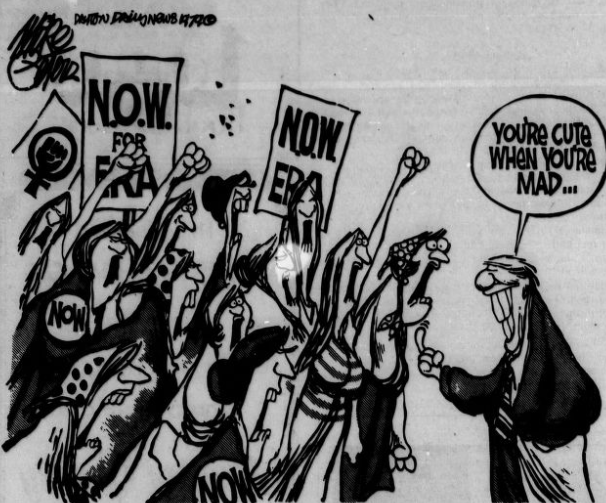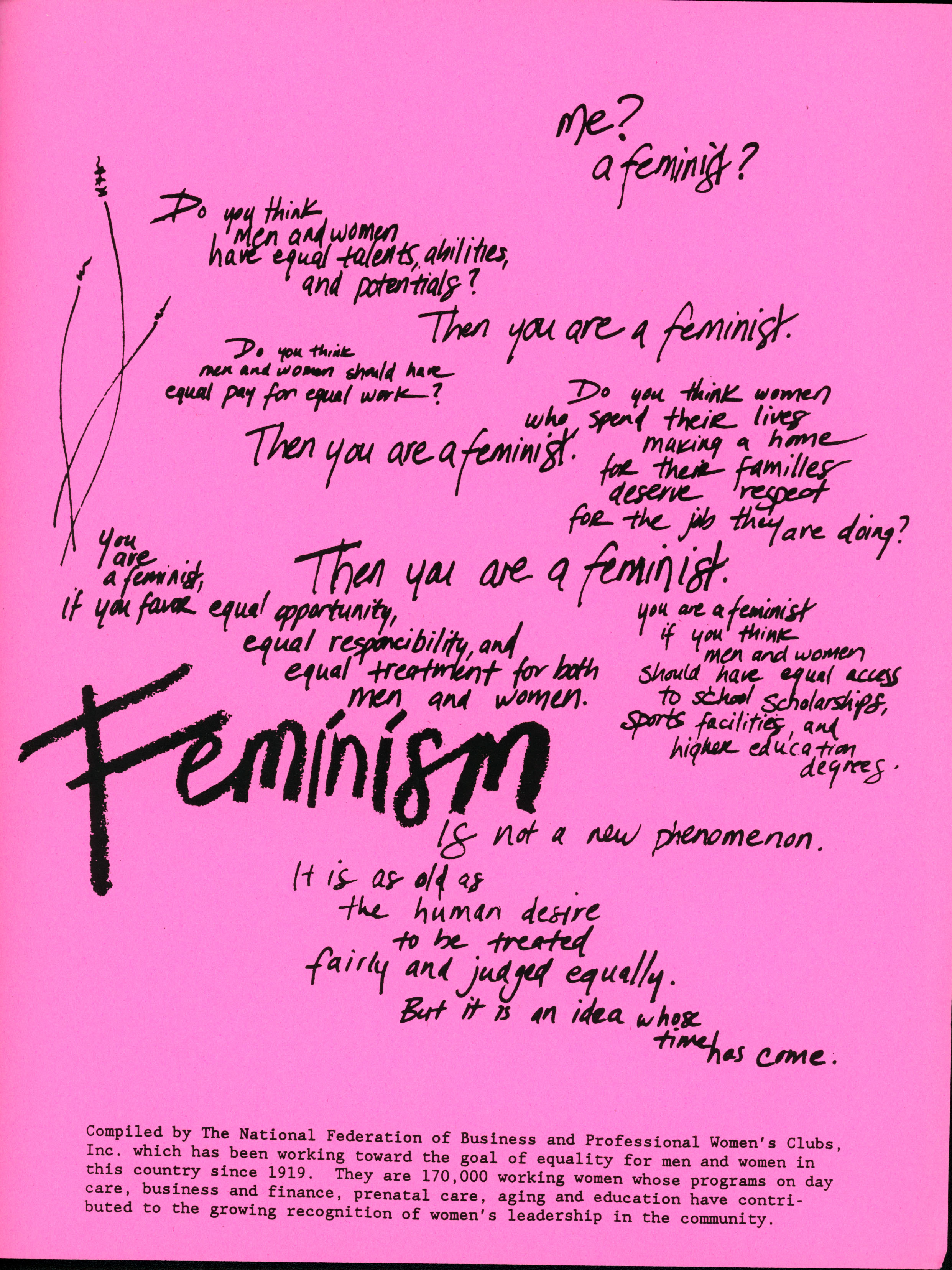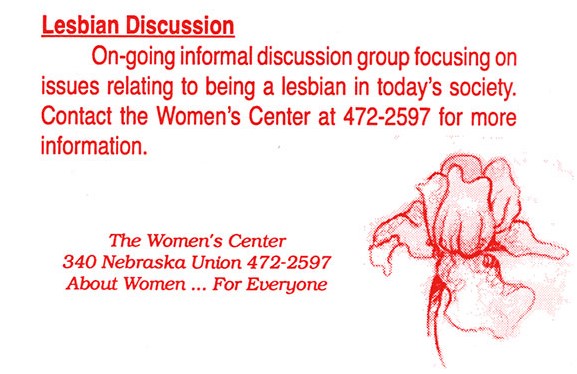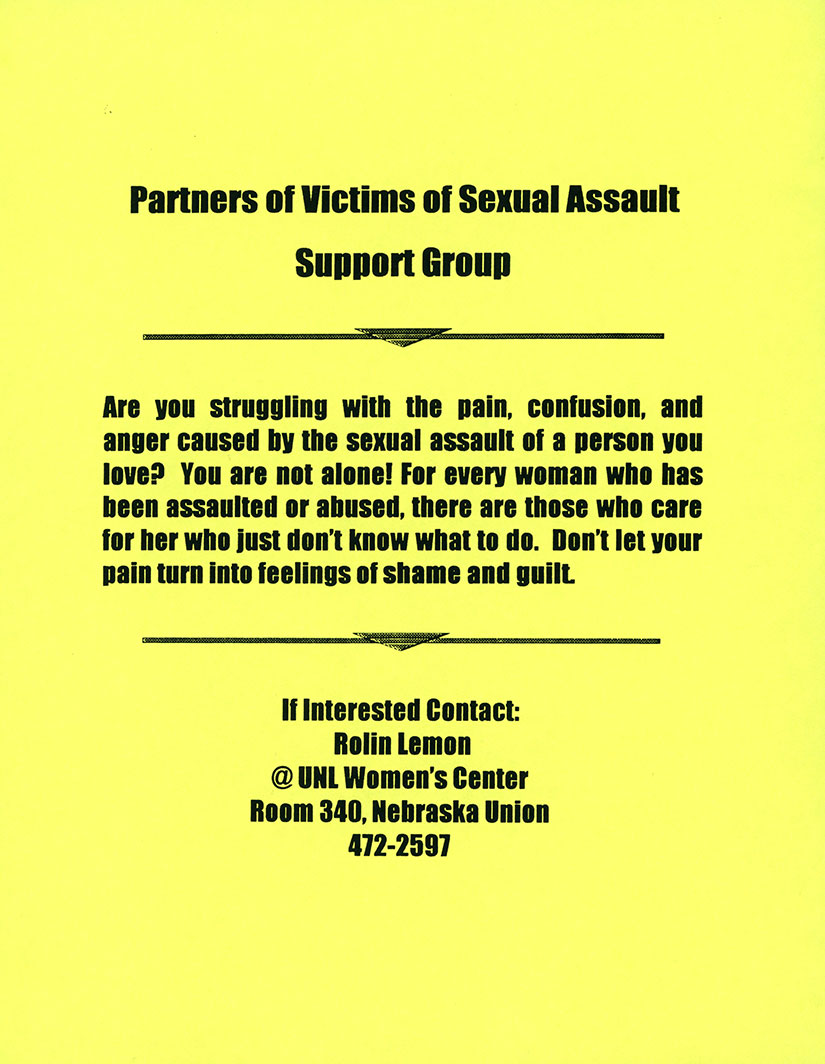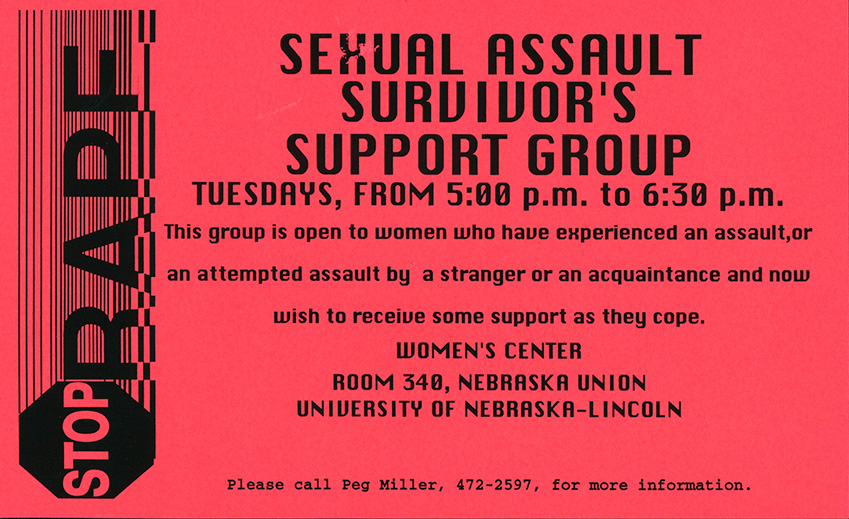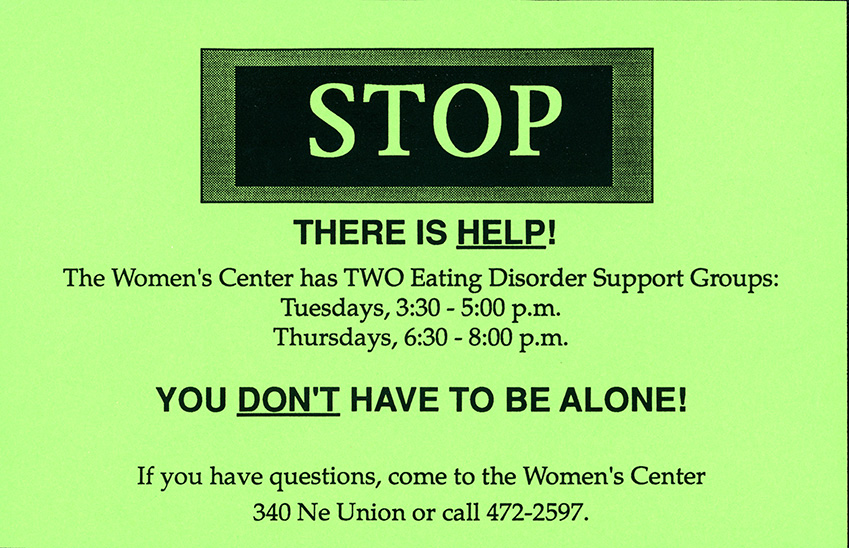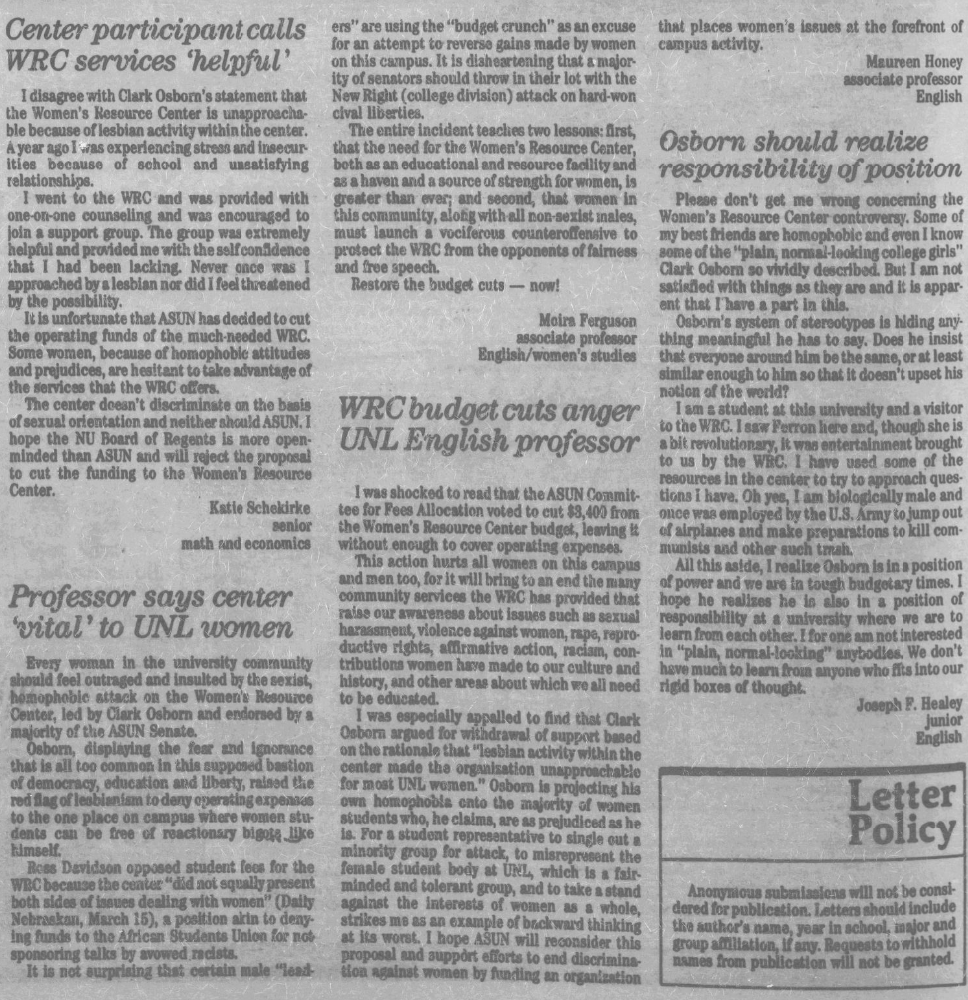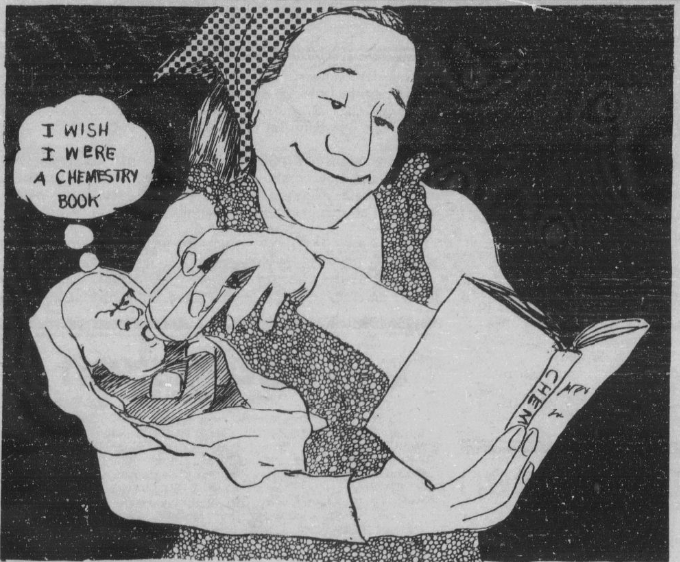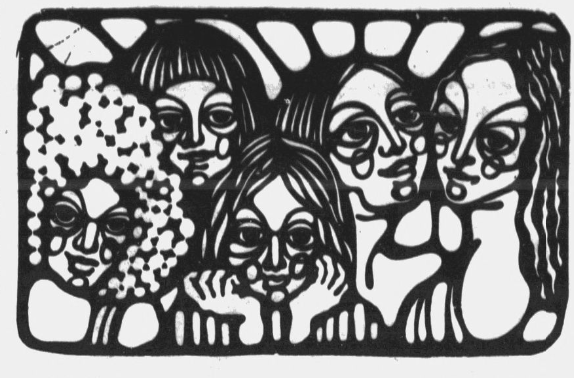
Women’s Resource Center
Helping Students Since 1971
Introduction
Since opening in the Union in 1971, the Women’s Resource Center has been a staple of campus life at the University of Nebraska-Lincoln. Now celebrating its 50th anniversary, the WRC continues to help students find information and receive counseling for a variety of situations regardless of their race, gender, or sexual orientation.
The WRC has changed and developed since its modest beginnings, starting slow with providing resources and a safe space, to now offering a variety of group and solo therapies, lively events on campus, and support through its affiliations. Yet, the WRC is still a place where one can find information and resources as well as find a safe place to hang out with old friends and create new ones.
Throughout the years, the WRC has taken stands on many issues of the day. The WRC backed the fight for equal rights by supporting the Equal Rights Amendment since its debut. It supported the LGBTQ+ community by providing a safe place and information. Along with these activities, the WRC has helped students deal with sexual assault and harassment, eating disorders, family life, and much more.
Through its programs, the WRC has shared knowledge and helped many people. They have opened the door to new understanding and diversity in the UNL community. The WRC is still open, now on the third floor of the Union, and continues working to support students and faculty.
Helping with Issues of the Day
Equal Rights Amendment
The Equal Rights Amendment, also known as the ERA, is a proposed amendment to the constitution, providing a constitutional guarantee that men and women will have equal rights. The ERA was first proposed in 1923 and passed by Congress in 1972. Nebraska ratified the amendment in 1972 in a vote of 84 to 8, becoming the second state to do so. The ERA was ratified by 35 states, but fell short of the 38 needed for ratification by the 1977 and extended 1982 deadlines.
Five states, Nebraska included, voted to rescind their ratification of the amendment. These states were unsuccessful as rescinding was deemed unconstitutional.
N.O.W for ERA
A political cartoon demonstrated the frustration of fighting for equal rights to a government made up of mostly male politicians. Daily Nebraskan, 18 January 1980
WRC Promotes the ERA
In 1981 the WRC funded a speaker to discuss the ERA. This speaker was from the Nebraska Commission on the Status of Women. Even though Nebraska had already ratified the amendment, the WRC hoped to raise awareness about the ERA as the 1982 ratification deadline approached.
The Center also supported the ERA during Women’s Week ‘81 through an ERA run, which was created to spread the word on the amendment. The three-mile run was sponsored by Lincoln’s NOW, the National Organization for Women. The run also promoted WRC resources that could be checked out in order to learn more about ERA and women’s equality.
The WRC opposed negative stereotypes about feminism. The Center informed people about feminism and women’s rights in the community and worked alongside organizations such as Women’s Action Group, YWCA, and Women’s Rights Committee.
The Women’s Resource Center also advocated for equity and equality between all genders. The WRC raised awareness of the inequality between men and women by looking at UNL faculty. In their newsletter, published in 1990, statistics showed that in the 1989- 1990 school year, the faculty was 83% male and males held the higher positions of full professor and associate professor. This unequal workforce highlighted the problem women faced and showed that it was not in a far off place, but right in Nebraska.
LGBTQ+ Rights
Beginning in 1968 and 1969, LGBTQ clubs formed on college campuses to support civil rights and one another. The first group was the Student Homophile League in 1968, formed at Columbia, followed by a chapter of the League at Cornell. In 1970, UNL students formed their own LGBTQ group called Lincoln Gay Action Group, who looked to normalize and educate the public on the struggles and realities of LGBTQ community members.
In 1970 UNL offered one of the nation’s first gay studies courses, a controversial topic at the time. A literature class focused on literature by lesbians was offered in 1977.
“Not only did the student groups take the lead in asserting a sense of pride in being gay, but, through speaking unabashedly to others about their personal experiences and developing alliances with those engaged with other struggles, especially the antiwar movement, they made gay liberation an important concern for many non-gay people.”
The WRC Welcomes LGBTQ+ Students
The Women’s Resource Center provided books on topics relevant to the LGBTQ+ community. They also hosted support groups such as a lesbian discussion group where students could talk about their experiences. This group, along with the library and other events, allowed students to learn and understand either themselves or others in a safe space. Some events like these were collaborations with the Lincoln Gay Action Group, a partner of the WRC.
At times, the Center’s advocacy created challenges from those who opposed, or misunderstood, its purpose. In a 1981 Lincoln Star article, WRC Coordinator, Marcee Metzger said: “I think we’ve always had a problem with the perception of students and the Women’s Resource Center. It has been regarded as ‘radical, bra-burning, lesbian . . . and that men are not welcome in the center.” Metzger explained attitudes were changing as the Center’s speakers and programs reached more people. Still, in March 1985 Association of Students at the University of Nebraska (ASUN) speaker Clark Osborn proposed an amendment to cut the WRC’s $3,400 operating expenses on the grounds that “lesbian activity” at the Center made it “unapproachable for most UNL women.” WRC Coordinator Jan Deeds disputed the decision and explained that the Center helped about 500 students a month with a variety of services. WRC supporters rallied against the budget cut.
Lesbian Discussion Flyer
This flyer advertised the lesbian discussion group that met at the Women’s Resource Center. It focused “on issues relating to being a lesbian in today’s society.” The group provided a safe space to talk to through issues.
Sexual Assault Awareness
In 1974, after an increase in rapes of 18 to 24 year-olds, the Women’s Resource Center joined the newly-formed Lincoln Coalition Against Rape (LCAR). This coalition provided programs and support to those who had experienced sexual assault as well as working toward rape prevention. Starting in the 1990s, they held a week-long event to increase awareness about sexual assault. Such sessions included self-defense, speeches, workshops, and fundraisers.
Partners Support Group
This flyer advertised a support group that helped those who had friends, family members, or partners who were victims of sexual assault. This group shows it was not only the victim who was affected by this crime.
WRC Provides Education and Support
Not only did the Women’s Resource Center use their resources to raise awareness through the annual sexual assault week, they also had a Crisis Hotline with trained staff ready to aid any individual. Staff talked a person through the situation and assisted if the survivor wanted to report the crime to the police. WRC also provided support groups for both sexual assault survivors as well as partners of sexual assault survivors. These groups provided support from a counselor and connected survivors who had gone through the same trauma. Flyers around campus advertised the help available.
Sexual Assault Survivor Flyer
This flyer advertised a support group for sexual assault survivors. This group was for those “who have experienced an assault, or an attempted assault by a stranger or an acquaintance and now wish to receive some support as they cope.”
Eating Disorders as Illness
Eating disorders are among the most deadly mental illnesses, especially among women ages 15-24. This illness affects about 10% of college women. Those with an eating disorder experience a constant struggle in their relationship with food and calories. Excessive worry about calories and weight can dominate their life, even if they are severely underweight and unhealthy because of it. About 4% of college men are also suffering with this illness. The impact of eating disorders is significant, and the disease is a lifetime battle.
WRC Helps Fight Eating Disorders
In 1992, student Sejal Patel worked with WRC director Judith Kriss to form a support group for students with eating disorders. This support group came at a time where peer counseling and crisis counseling was becoming a priority on campus and, more specifically, at the WRC. In addition, with such a serious problem affecting many of the women and men on campus, the Women’s Resource Center promoted a healthy lifestyle and educated students about eating disorders.
Support for the Women’s Resource Center
As early as 1972, a year after the Women’s Resource Center opened, the Center faced funding problems. In November 1972, the Daily Nebraskan reported accusations that the ASUN was trying to put the center out of business. The ASUN claimed that it was untrue and the budget was just late. In response, campus women circulated a petition in support of WRC funding.
In 1985, when the Women’s Resource Center was facing budget cuts, support for the WRC flooded in. This support came in letters, some of which were published in the Daily Nebraskan. Non-traditional students, especially, talked about the WRC’s value. Supporters hoped to reverse the budget cuts and see the WRC funded for the coming years. WRC officials, backed by many students, filed to have the budget cut reviewed on two grounds; one, the vote was unfair as many of the ASUN members were not there to participate in the vote and two, it is unlawful to cut budgets based on controversial political opinions. The WRC succeeded in their goal, and the budget was restored.
“I write as a former student (1977-1981) and non-traditional woman; I was a 28 year old single mother when I returned for my third try at a college education in Nebraska. […] I was a welfare mother during my time at the University and cannot conceive of surviving the difficulties of that life without the support and part-time employment of Work Study in the WRC with both sustained and enriched me. […] Non-traditional students are the population all higher education must evolve to serve, and women of all ages and backgrounds deserve a Resource Center where autonomy and independence are the base on which other creations and projects can grow.”
Letters Supporting the WRC
This newspaper article published letters that were sent to the Daily Nebraskan in support of the WRC. These letters explained the importance of the Center and why it should remain a funded part of campus life. Daily Nebraskan. 20 March 1985.
Illustration of Non-traditional Student
This illustration shows a non-traditional student with a child. Due to the resources the WRC provides, she is able to study chemistry while taking care of her child. Daily Nebraskan, 29 January 1975.
In 1996, ASUN tried to cut the Center’s budget once again. Three different amendments were proposed to cut the Center’s budget, and each was voted down with a vote of eight to two. Members of the student community voiced their concerns about defunding the WRC. Director of the Nebraska Unions at the time, Daryl Swanson, said in a Daily Nebraskan article, “There’s some misinformation that concerns me. We’re proud of the Women’s Center and I think they provide a very valuable service to men and women.”
In letters written regarding the Women’s Resource Center, women express the helpfulness of the center in regards to student life. In 1989, one student wrote, “I am a non-traditional student who has discovered a very supportive network of women who helped me with various problems and questions. I have seen many women assisted with various problems from trying to find information, phone numbers, directions, or just finding people with the same interests.” With the support of the students, women have gotten that and much more out of the WRC. A place where men and women could find resources to help with college life and connect with those with similar interests and goals, it was also a place for new ideas that come from meeting new people.
Continuing to Help
The Women’s Resource Center has evolved over the years, but the dedication it shows to the students at UNL has remained. As the WRC’s 2021 vision statements says, “Our vision is to have a campus that recognizes intersectional understandings of gender and sexuality, by engaging with campus and local community on issues related to gender, gender equity, sexuality and social justice.”
Bibliography
Beemyn, Brett. “The Silence is Broken: A History of the First Lesbian, Gay, Bisexual College Student Groups.” The Journal of thte History of Sexuality, Vol. 12, No. 2. April., 2003, pp. 205-223.
Braverman, Shirley J. “Homosexuality.” The American Journal of Nursing, Vol. 73, No. 4. April., 1973, pp. 652-655. https://www.jstor.org/stable/3422972
The Daily Nebraskan. “Awareness Week to Educate Students about Sex Crimes.” November 12, 1992.
The Daily Nebraskan. “Class Explores Lesbians’ Literature, Self-concepts.” October 20, 1977.
The Daily Nebraskan. “Committee Tries to Cut Women’s Center Budget.” February 09, 1996.
The Daily Nebraskan. “Eating Disorders Pose Lifetime Battle.” February 26, 1999.
The Daily Nebraskan. “Faculty: UNL Women Need More Key Roles.” April 22, 1991
The Daily Nebraskan. “Six University Organizations Hit with ASUN Budget Cuts.” March 15, 1985.
The Daily Nebraskan. “Student Begins Eating Disorder Support Group.” December 14, 1992.
The Daily Nebraskan. “University Community Defends Homophile Course.” October 30, 1970.
The Daily Nebraskan. “UNL Civil Liberties Union Opposes WRC Budget Cuts.” 21 March 1985.
The Daily Nebraskan. “UNL Plans Women’s Workshop.” January 23, 1975
The Daily Nebraskan. “Women’s Center Plans Open House.” April 23, 1981.
The Daily Nebraskan. “Women’s Center Remains Place for Academic, Social Experiences, Despite Locale, Structural Changes.” January 21, 1993.
The Daily Nebraskan. “Women’s Resource Center Marks 2nd Anniversary.” September 05, 1973.
The Daily Nebraskan. “Women’s Resource Center Opens Union Office.” October 04, 1971.
The Daily Nebraskan. “Women’s Resource Center Programs to Feature Discussion of ERA Passage.” September 03, 1981.
The Daily Nebraskan. “Women’s Resource Center, ASUN Bicker Over Future Funds.” November 20, 1972.
The Daily Nebraskan. “Women’s Week ‘88.” March 02, 1988.
The Daily Nebraskan. “WRC Official Disputes ASUN Decision. ” March 18, 1985.
“Facts about the Equal Rights Amendment” Young Children, Vol.34, No.2. January 1979, pp. 10-12. https://www.jstor.org/stable/42724154.
The Lincoln Star. “LINGAG Organizes, Tells Aims.” Dec. 15, 1970.
The Lincoln Star. “Women’s Center Caters to Women, but Doesn’t Denounce Men.” April 19, 1981.
“Nebraska’s On-Again Off-Again relationship with the Equal Rights Amendment.” HistoryNebraska. https://history.nebraska.gov/blog/nebraskas-again-again-relationship-equal-rights-amendment.
University Photos, University Communications Records (RG 42-12-02) Archives & Special Collections, University of Nebraska- Lincoln Libraries.
Women’s Resource Center, Records (RG 29-20-01). Archives & Special Collections, University of Nebraska–Lincoln Libraries.
Credits
This exhibit on the UNL Women’s Center was created by English undergraduate Jessie Marie McCloy as part of the Schmidt Family Internship in the Summer of 2021.

